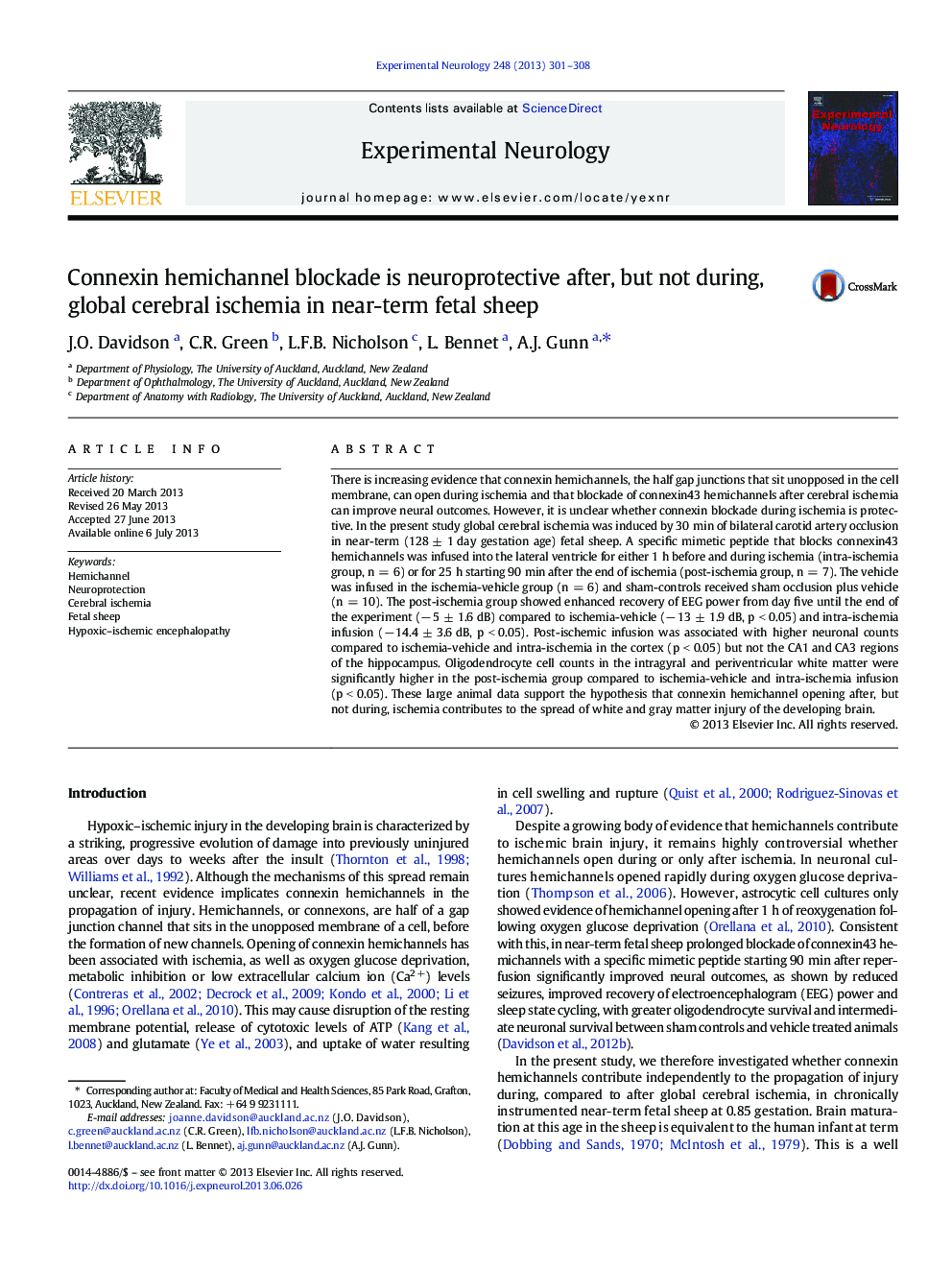| Article ID | Journal | Published Year | Pages | File Type |
|---|---|---|---|---|
| 6018094 | Experimental Neurology | 2013 | 8 Pages |
Abstract
There is increasing evidence that connexin hemichannels, the half gap junctions that sit unopposed in the cell membrane, can open during ischemia and that blockade of connexin43 hemichannels after cerebral ischemia can improve neural outcomes. However, it is unclear whether connexin blockade during ischemia is protective. In the present study global cerebral ischemia was induced by 30 min of bilateral carotid artery occlusion in near-term (128 ± 1 day gestation age) fetal sheep. A specific mimetic peptide that blocks connexin43 hemichannels was infused into the lateral ventricle for either 1 h before and during ischemia (intra-ischemia group, n = 6) or for 25 h starting 90 min after the end of ischemia (post-ischemia group, n = 7). The vehicle was infused in the ischemia-vehicle group (n = 6) and sham-controls received sham occlusion plus vehicle (n = 10). The post-ischemia group showed enhanced recovery of EEG power from day five until the end of the experiment (â 5 ± 1.6 dB) compared to ischemia-vehicle (â 13 ± 1.9 dB, p < 0.05) and intra-ischemia infusion (â 14.4 ± 3.6 dB, p < 0.05). Post-ischemic infusion was associated with higher neuronal counts compared to ischemia-vehicle and intra-ischemia in the cortex (p < 0.05) but not the CA1 and CA3 regions of the hippocampus. Oligodendrocyte cell counts in the intragyral and periventricular white matter were significantly higher in the post-ischemia group compared to ischemia-vehicle and intra-ischemia infusion (p < 0.05). These large animal data support the hypothesis that connexin hemichannel opening after, but not during, ischemia contributes to the spread of white and gray matter injury of the developing brain.
Related Topics
Life Sciences
Neuroscience
Neurology
Authors
J.O. Davidson, C.R. Green, L.F.B. Nicholson, L. Bennet, A.J. Gunn,
